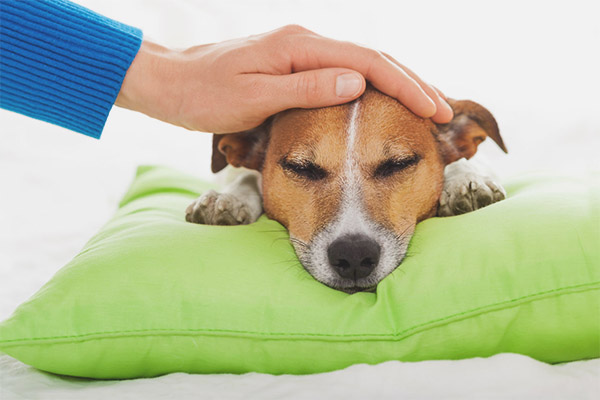The content of the article
A healthy and full of strength dog walks with pleasure, plays with households, eats with appetite and sleeps soundly. If the dog is unwell, then its behavior changes dramatically. This should serve as an alarm for the owner of the animal. First of all, the temperature is measured, and if it is raised or lowered, you should immediately contact a veterinary clinic.
Signs of increased body temperature in dogs
Ailments do not ask for permission, but always come unexpectedly. The main task in such cases is to quickly respond to the alarming symptoms, diagnose and begin treatment. Lost time turns into complications and significantly lengthens the recovery period. The main indicator of the onset of the disease becomes a change of behavior. Attentive owner immediately notices. The following symptoms should alert:
- the dog became lethargic, apathetic;
- does not respond to commands;
- started cramps, indigestion;
- tail lowered and relaxed;
- mucous membranes turned pale or acquired a bluish tint;
- mucous discharge from the eyes and nose began;
- pet refuses to eat;
- does not want to go for a walk;
- reluctantly responds to the voice of the host.
In a healthy animal, the nose should be cool and moist. A rise in temperature is indicated by a dry, hot nose, covered with crusts and increased thirst.
Normal readings in dogs vary between 37.5 ° - 38.5 °, for puppies the norm is slightly higher, about 39 °. It is necessary to take into account body weight and breed. In large animals, body temperature is lower, in small representatives the metabolism goes faster, respectively, they will be warmer.
Causes of temperature change
The reaction of the body is sometimes unpredictable, but there are several main points.
- Conducting routine vaccinations. After the introduction of the weakened strain, the body begins to actively fight, producing the necessary antibodies. This is often accompanied by general malaise. Special medical measures are not required.It is enough to create a sparing conditions for the dog, leave it alone for a while, limit communication with other animals and carefully monitor its condition.
- The weather is also able to influence the thermoregulation of the animal's body. On hot days there is a deterioration in the health of large dogs and individuals of old age.
- General overexcitement caused by a dramatic change in lifestyle, climate change, or participation in exhibitions can cause general malaise. In order for everything to return to normal, it is enough for 1 to 2 days not to subject the animal to additional stresses, to create a calm, friendly atmosphere.
- Inflammatory processes, viral infections and allergic reactions in the body are accompanied by changes in the temperature background, external signs also appear quite clearly, for example, lymph nodes increase.
- After surgery, the dog may experience sudden temperature fluctuations.
- Overheating and overcooling are equally undesirable and cause a negative reaction of the body.
- Puppies during teething also have significant changes in temperature.
- If the thermometer's indicators go off scale at 40 - 41 degrees, you need to immediately show your pet to the veterinarian, you may even need to take emergency measures in the form of medicinal droppers.
Measure the temperature of the animals by the rectal method using a mercury or electronic thermometer. For the success of the procedure, you should create the most relaxed, friendly atmosphere, slowly talk to the dog, not make sudden movements and not raise your voice. It is best during the process to use the help of a second person whom the dog knows or admits to him.
After receiving the testimony of the thermometer should try to determine the cause of elevated temperature. If the increase occurs very quickly, before the arrival of the doctor or on the way to the veterinary clinic you can alleviate the condition of the dog by applying dry ice or a bottle of cold water to the hips and neck of the pet, and also drink a little cool water.
Diagnostics and treatment prescription
The health of the pet of the pillars depends on the care of its owner. Do not ignore changes in the behavior of the dog, she thus makes it clear that the body has failed and you need to take action. When the temperature rises, it is better to seem alarmist and visit the vet. It is a relief to hear from him that everything is in order and continue to rejoice at communicating with an animal, than to regret the lost time and opportunities.
Video: what to do if the dog is sick?











To send